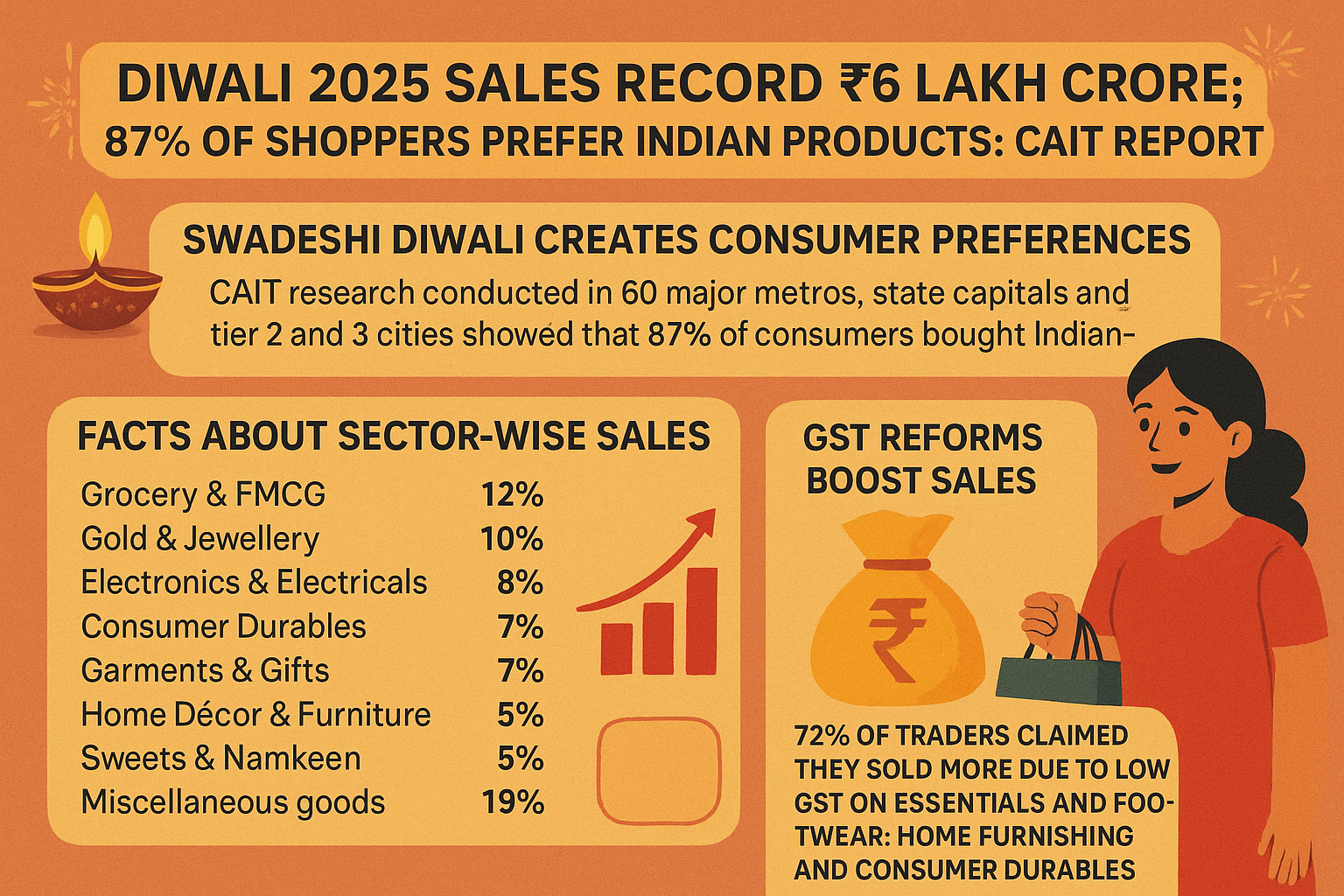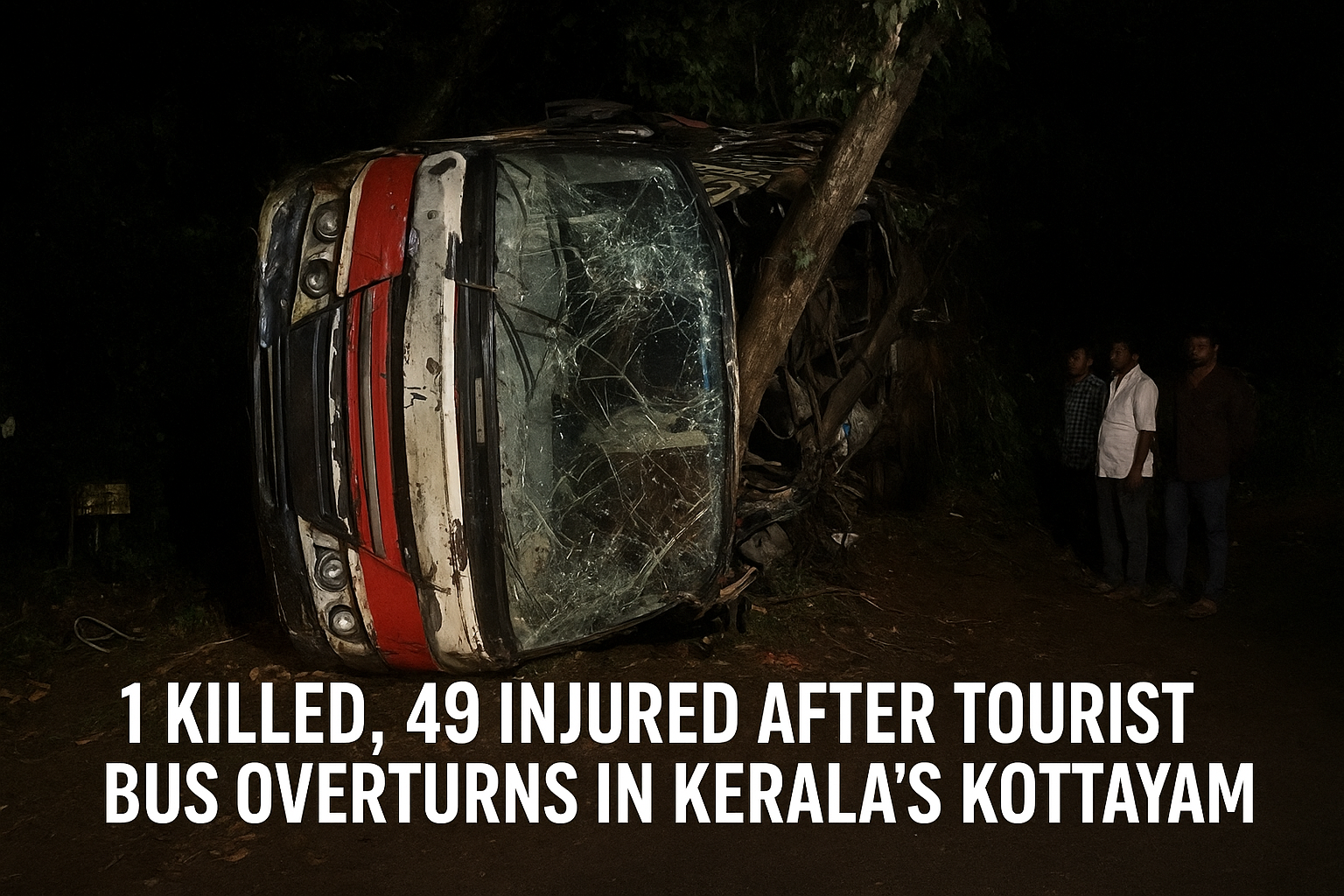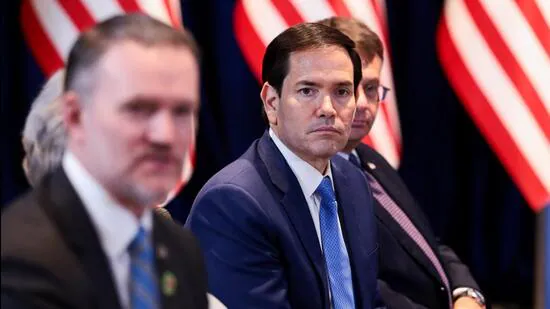Reference to Business Today.The retail sector in India has been through a historic festive madness in Diwali 2025 with an overall sales of 6.05 lakh crore, which is synonymous to 25 percent increment in comparison to the earlier year recorded sales of 4.85 lakh crore. The Confederation of All India traders (CAIT) reported that goods offered 540 lakh crore and services 65,000 crore therefore it became the biggest Diwali trade in India history.
Swadeshi Diwali creates Consumer Preferences.
The solid research of CAIT, which was conducted in 60 major metros, state capitals and Tier 2 cities and 3, showed how powerful the resonance of the name of Local the government sponsored campaign was; that is the fact that 87% of the consumers bought Indian-made products.
Praveen Khandelwal, Secretary general of CAIT, on his part, pointed out that this vision of a Swadeshi Diwali by Prime Minister, Modi assisted in altering the consumer behaviour of people to such an extent that the demand of Chinese products fell significantly. There is an increasing customer appreciation to local goods.
Facts about Sector-Wise Sales.
The disaggregation of the contributions of the goods sector was given by B.C. Bhartia, the CAIT National President:
- Grocery & FMCG – 12%
- Gold & Jewellery – 10%
- Electronics & Electricals – 8%
- Consumer Durables – 7%
- Garments & Gifts – 7% each
- Home Décor & Furniture – 5% each
- Sweets & Namkeen – 5%
- Miscellaneous goods – 19%
The service sector had also recorded a colossal growth and it earned 65,000 crore in the form of logistics, packaging, travel, hospitality, man power and event management. Bhartia appended, festive economy is presently displaying multiplier in both goods and services.
GST Reforms Boost Sales
The rationalization of festivals helped in spending money on festivals. According to CAIT, 72 percent of traders claimed that they had sold more due to low GST on essentials and footwear, home furnishing, and consumer durables. The price was also kept constant and this encouraged the shoppers to purchase more.
Record Confidence between the Consumers and the Traders.
The Trader sentiment stood at record high of 8.6/10 on the Trader Confidence Index (TCI) and 8.4/10 on the Consumer Confidence Index (CCI). Khandelwal noted that this optimism is driven by the steady rates of inflation, rise in disposable income and growing confidence in the trend of economic growth in India.
Jobs Creation and Rural contribution.
The boom festival also created 50 lakh seasonal jobs in the logistics, retail, packaging, and transport. The rural and semi urban India contributed 28 percent of the overall sales and this indicates the increasing market penetration beyond the large cities. Khandelwal also stated that the non-corporate sector is the actual growth engine of India and has over nine crore small firms.
Policy Recommendations
Based on their results, CAIT proposed an action that can strengthen further the festive economy:
- Facilitate GST to small traders.
- Make more credit available to non-corporate bodies.
- Set up logistics hubs at Tier 2 cities and Tier 3 cities.
- Promote low-MDR transactions over the internet.
- Enhance infrastructure in the market.
- Sustain swadeshi is a movement that is run under organized trade government.
Conclusion
The Indian retail history was not only setting a new standard of Diwali 2025 but also demonstrated the growing role of local production, GST transformations and power of small business. The results indicate the powerful drive of consumer confidence, government policy, and patriotic consumerism that is driving the Indian festive economy.
Looking for website Designing ? Connect with wovved today.



